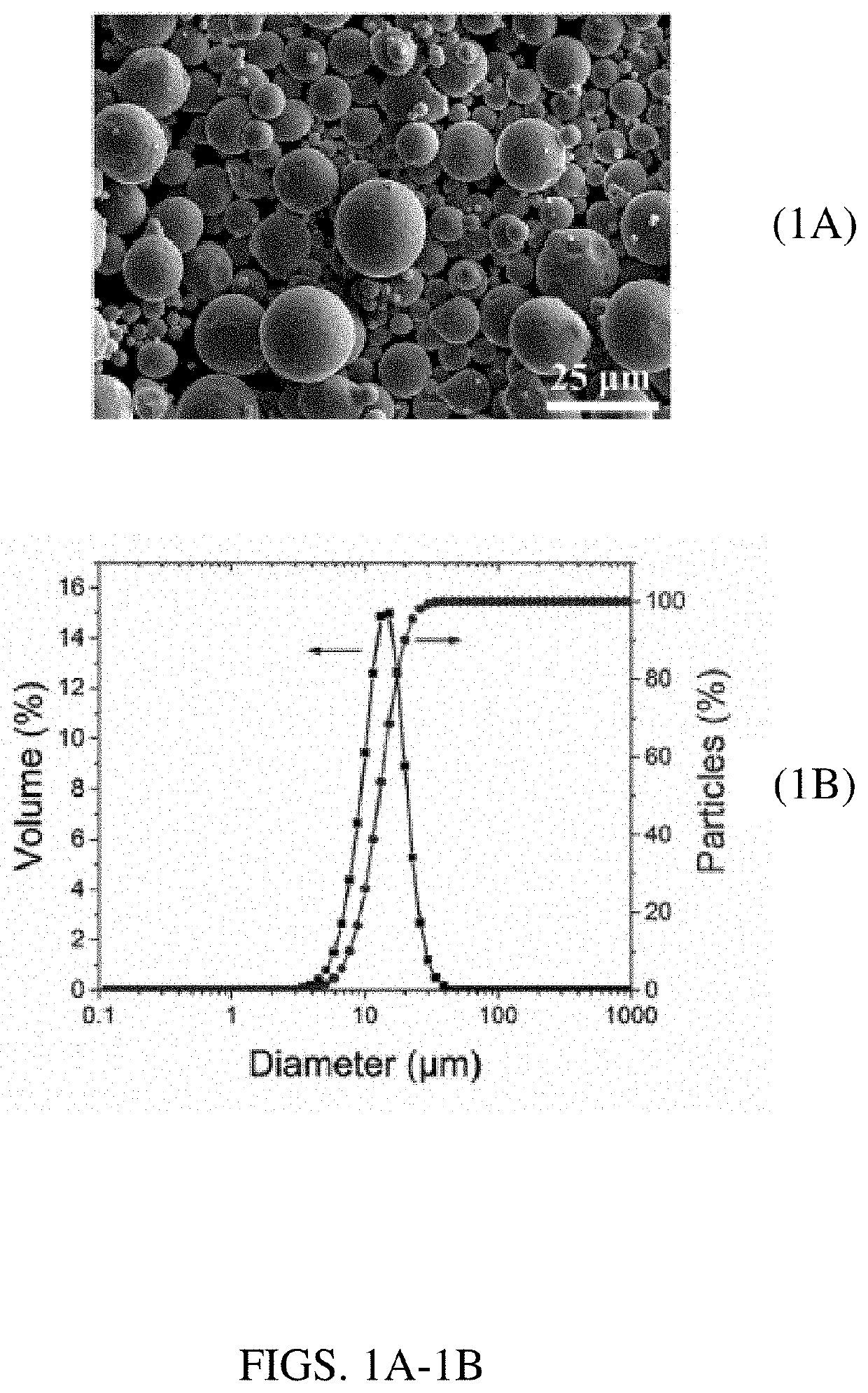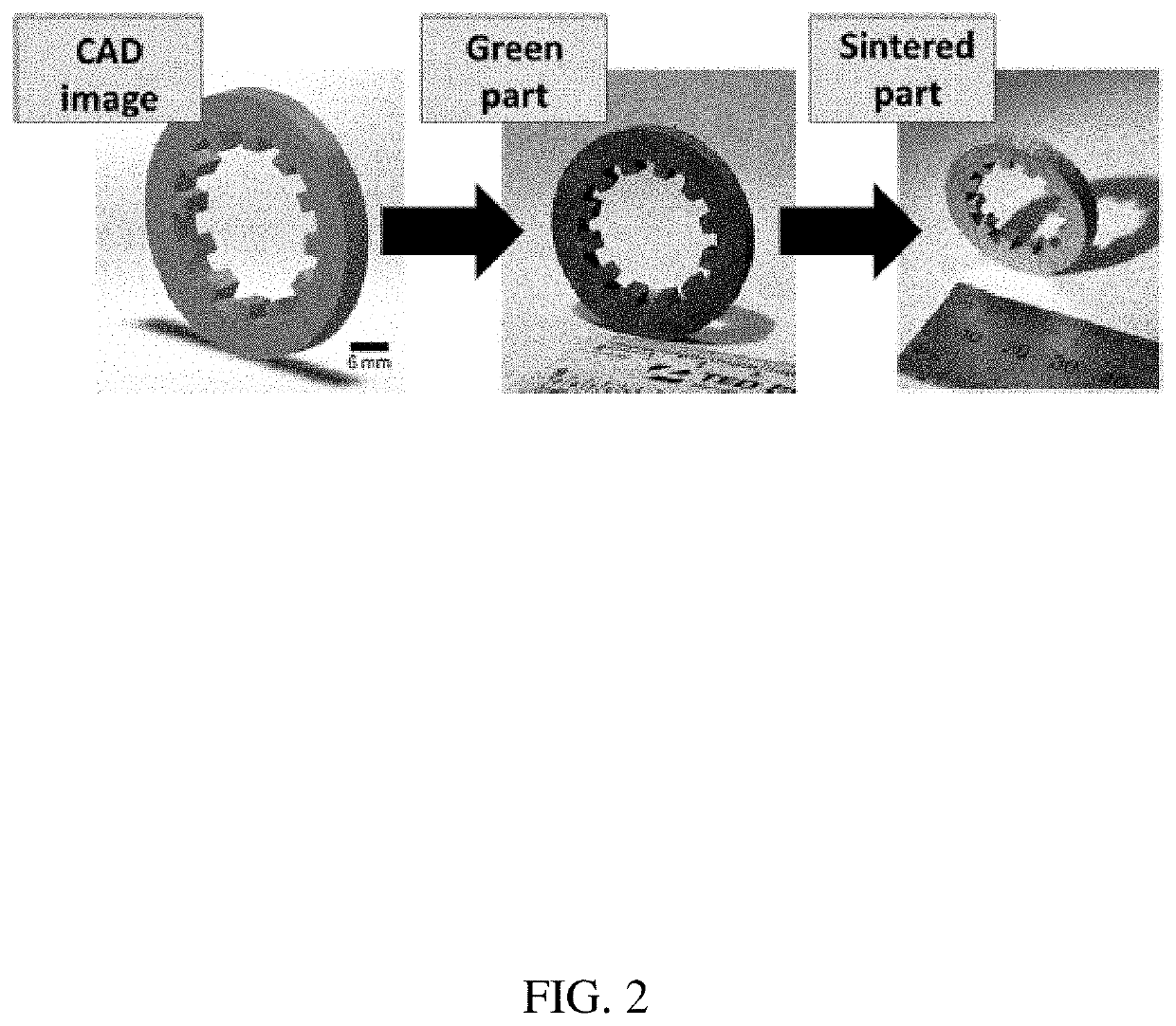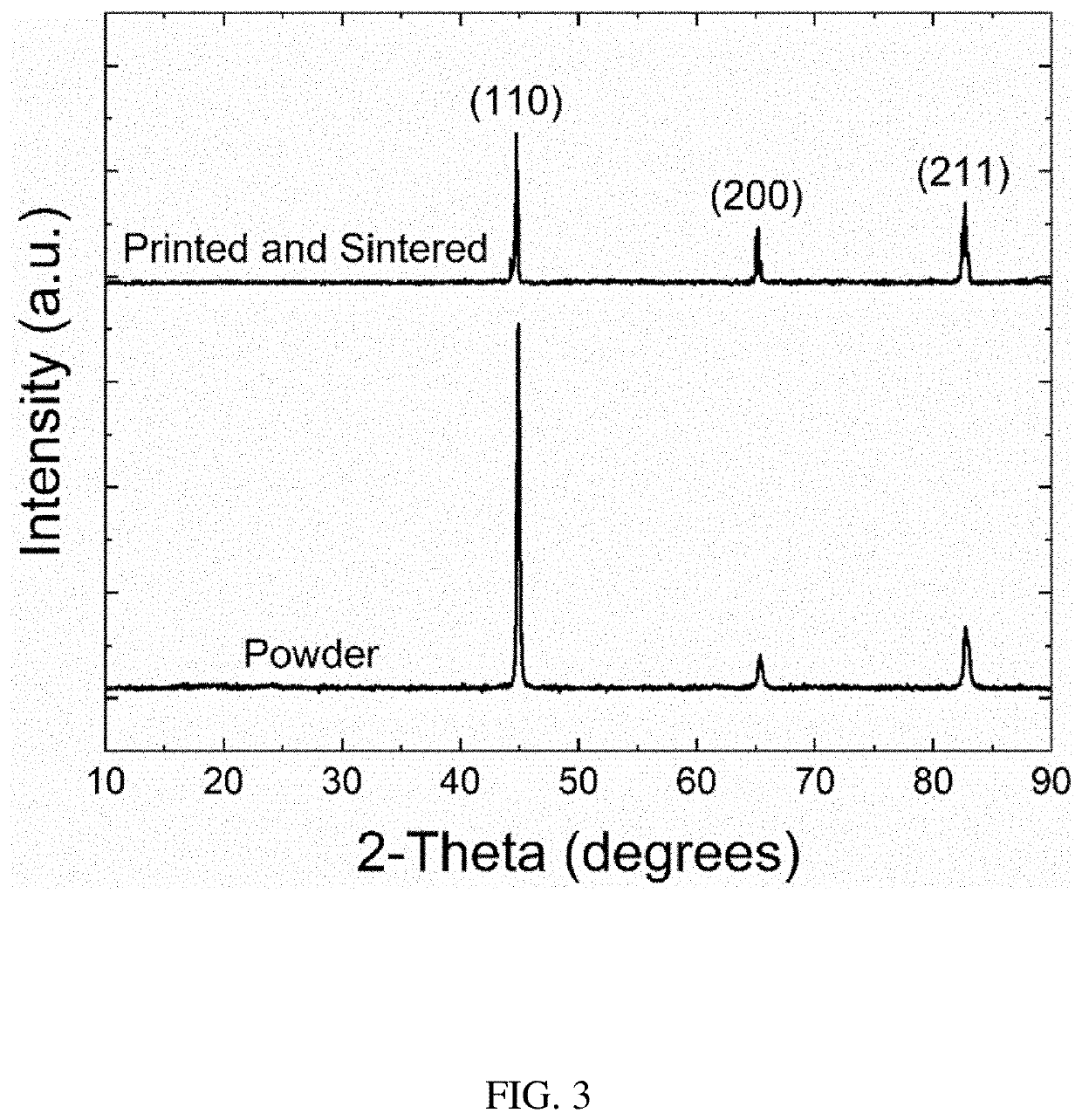Indirect additive manufacturing process for fabricating bonded soft magnets
a manufacturing process and soft magnet technology, applied in the direction of additive manufacturing with solid and fluid, magnetic materials, magnetic bodies, etc., can solve the problems of high manufacturing cost, limited productivity, and steel becoming too brittle to be cold rolled or stamped without cracking, etc., to achieve cost-effective
- Summary
- Abstract
- Description
- Claims
- Application Information
AI Technical Summary
Benefits of technology
Problems solved by technology
Method used
Image
Examples
examples
[0050]Overview
[0051]In the present work, Fe with 6.5 wt. % Si (i.e., “Fe-6.5 Si”) soft magnetic material was printed using a BJAM process. Parts were cured, followed by debinding, and solid-state sintered to high densities without cracking. The parts had excellent magnetic (both direct current (DC) and alternating current (AC) core loss properties) and mechanical properties. The microstructure was revealed with scanning electron microscopy (SEM) and electron backscatter diffraction (EBSD) showing grain size, orientation, and texture of solid-state sintered samples. In contrast to the conventional art, the presently described bonded material successively achieved additively printed Fe-6 Si or Fe-6.5 Si components without cracking. The BJAM-processed 6.5% silicon steel parts with outstanding soft magnetic properties (high magnetic induction, high permeability, and low coercivity), along with defect-free nature, represent a significant advance in the power electronics industry.
[0052]Bu...
PUM
| Property | Measurement | Unit |
|---|---|---|
| particle size | aaaaa | aaaaa |
| size | aaaaa | aaaaa |
| size | aaaaa | aaaaa |
Abstract
Description
Claims
Application Information
 Login to View More
Login to View More - R&D
- Intellectual Property
- Life Sciences
- Materials
- Tech Scout
- Unparalleled Data Quality
- Higher Quality Content
- 60% Fewer Hallucinations
Browse by: Latest US Patents, China's latest patents, Technical Efficacy Thesaurus, Application Domain, Technology Topic, Popular Technical Reports.
© 2025 PatSnap. All rights reserved.Legal|Privacy policy|Modern Slavery Act Transparency Statement|Sitemap|About US| Contact US: help@patsnap.com



